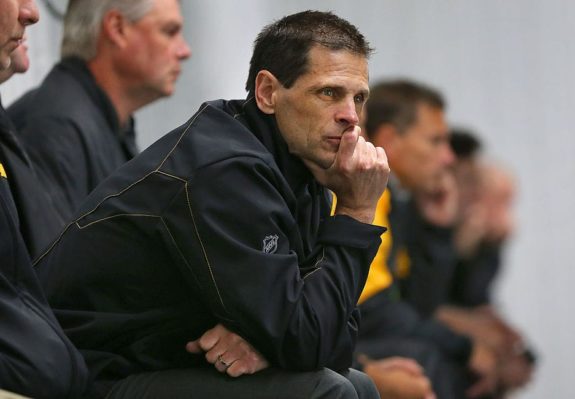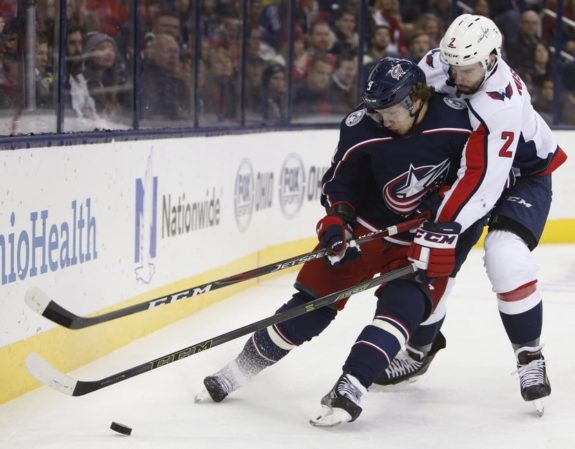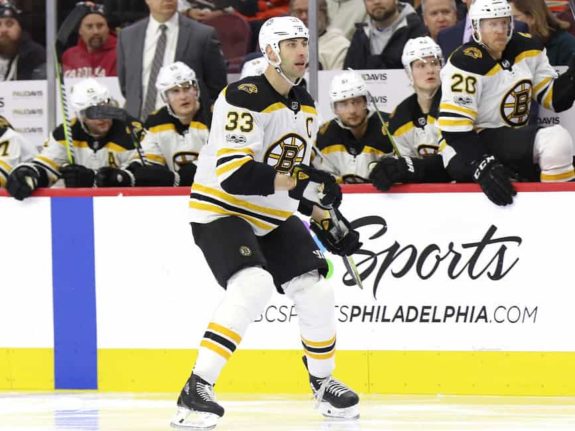Barring a major collapse, the Boston Bruins will return to the playoffs for the third straight season this spring. The only thing really left to decide is whether or not the Bruins will be the third seed in the Atlantic Division or if they will be in a wild card position. That battle with the Montreal Canadiens is likely to come down to the final few weeks of the season.
As of this writing, we are just 13 days away from the NHL’s annual trading deadline. Once again, general manager Don Sweeney and friends appear to be buyers heading into the frenzy. Last season it was Rick Nash and Nick Holden who were acquired in separate trades with the New York Rangers, with Drew Stafford coming over the season prior to that.

History suggests that Sweeney will do something prior to the deadline, it is just a matter of what he will do. In order to compete with teams like the Tampa Bay Lightning and Toronto Maple Leafs, the Bruins are going to need at least two lines that can consistently score. Right now, the Bruins are best described as a one-line team that doesn’t have much depth.
They can change that a few different ways. The easiest is to split David Pastrnak from the main line, playing him with David Krejci while Brad Marchand and Patrice Bergeron anchor another line. The other way? Acquire another star via trade. There are two out there, with the Ottawa Senators’ Mark Stone and the Columbus Blue Jackets’ Artemi Panarin being on the market.
The Bruins should steer clear of both, especially Panarin.
Bruins Can’t Afford It
The price just to acquire Panarin is likely to be higher than a normal rental. Why? Teams like the Florida Panthers and Rangers are favorites to sign the Russian this summer, but are both willing to make a move for him right now to secure his services. Would Dale Tallon or Jeff Gorton be willing to pay a bit of a higher price in order to ensure they get their man? One would have to assume so.
I’d be willing to argue that both the Rangers and Panthers are in a better spot to make the move than the Bruins, too. Why? Well, both of those teams won’t be playing in the playoffs this April, meaning they can move pieces around and not suffer much in the present. If the Bruins tinker too much with their roster, it could come back and bite them in the short-term, perhaps in the postseason.

Consider the potential asking price, too. At minimum, the Bruins are going to have to send a first rounder, likely 2019’s, an NHL forward (Jake DeBrusk) and a top prospect to Columbus (Urho Vaakanainen?). Considering the cap implications of this deal, it is also likely that the Bruins would have to send another contract out to comfortably make this deal.
You’re looking at sending out at least three, likely more, key assets to get a player who isn’t guaranteed to stay in Boston beyond this season. That’s a massive risk for any team, especially one that likely isn’t a favorite to compete for the Cup this June.
Bruins’ Contract Situation
Peter Chiarelli may not pay attention to the salary cap, but we certainly do. The Bruins currently have a projected $16 million in cap space heading into next season, but have some key players to re-sign. Defenseman Charlie McAvoy is a pending restricted free agent (RFA) and will command a healthy raise, while fellow RFAs Brandon Carlo and Danton Heinen will also need new deals. Although neither of them will break the bank, that is probably another $4 million in cap space gone between the two of them.
Lastly, the Bruins will also need to address the future of Zdeno Chara, who is a pending unrestricted free agent. If I were a betting man, and I am, I’d wager that Chara signs another one-year extension worth somewhere around the $5 million he is currently making. The Bruins are going to be tight to the cap no matter what next season, that’s just the reality of the situation.

Panarin is currently making $6 million per season, but is likely to get quite a nice raise when he signs his free agent deal this summer. Would anyone be surprised if he hit the $9 million per season range? I certainly wouldn’t. Does anyone think the Bruins would be able to fit him into their salary structure at that price point? I certainly don’t.
Forget the high asking price just to get him on the roster, the contract for Panarin is simply too much for a Bruins team that needs to sign its young players and only has a finite amount of money to work with. Unless someone is taking David Backes for free, I don’t see how Panarin fits in Boston.
Final Thoughts
Panarin, for my money, is one of the most electric players in the NHL and is a joy to watch. There is no doubt that he makes the Bruins a better hockey team, and he probably propels them past the Maple Leafs and into the second round once again. That said, does anyone think adding Panarin makes the Bruins a legit threat to win the Stanley Cup?
Take off the black and gold glasses for a second and be honest with yourself. He’s an unreal player and would make the Bruins a very good team, but I still don’t think they would be on the level of the Lightning or Washington Capitals. The high acquisition price AND massive contract are a lot to invest in, and there is absolutely no guarantee that Panarin would even want to stay. For all we know, he may have already made up his mind to join Sergei Bobrovsky in Florida next season with the Panthers.
It’s a nice dream, but the Bruins should steer clear of a Panarin trade this deadline.